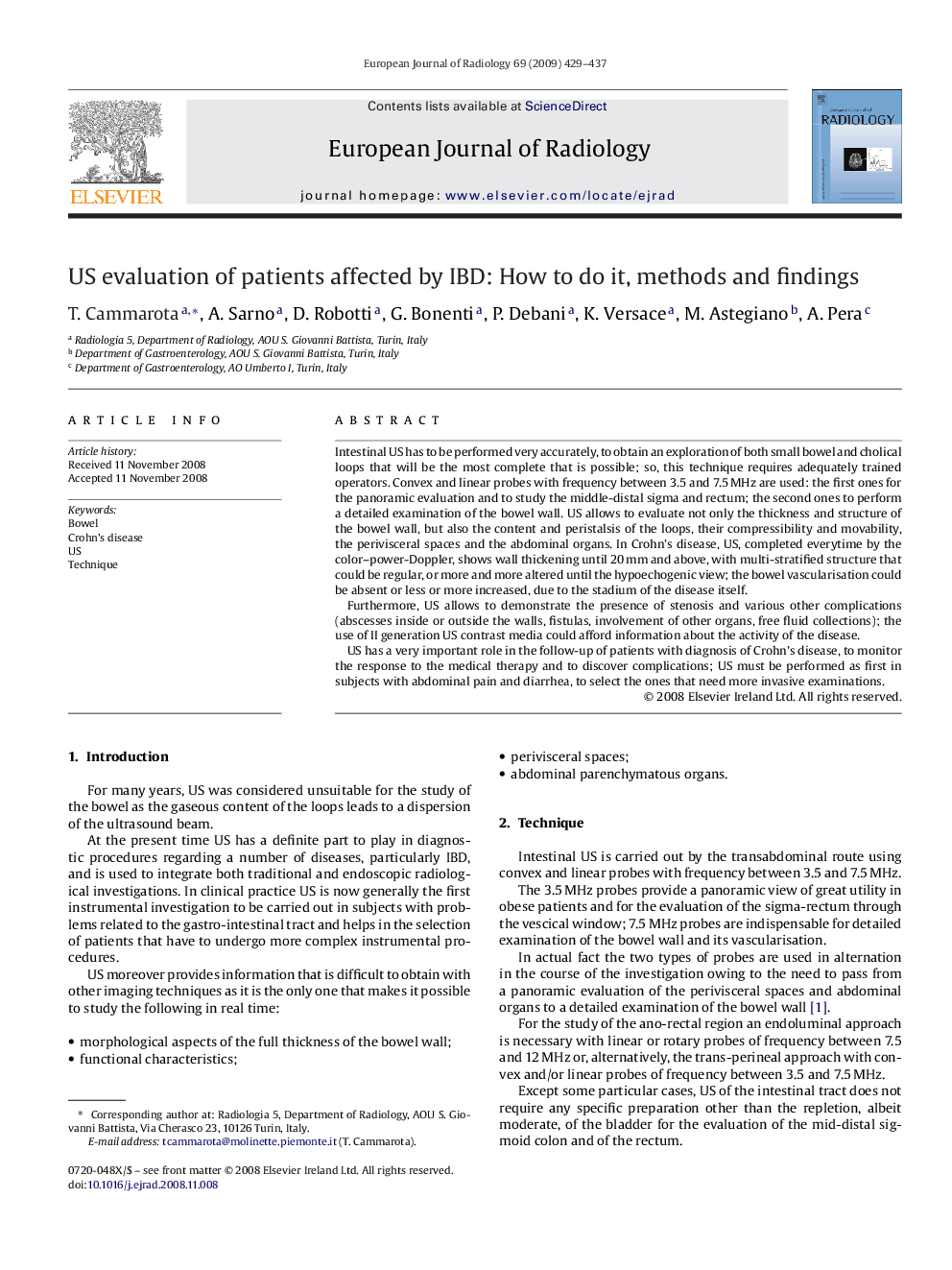| Article ID | Journal | Published Year | Pages | File Type |
|---|---|---|---|---|
| 4227581 | European Journal of Radiology | 2009 | 9 Pages |
Intestinal US has to be performed very accurately, to obtain an exploration of both small bowel and cholical loops that will be the most complete that is possible; so, this technique requires adequately trained operators. Convex and linear probes with frequency between 3.5 and 7.5 MHz are used: the first ones for the panoramic evaluation and to study the middle-distal sigma and rectum; the second ones to perform a detailed examination of the bowel wall. US allows to evaluate not only the thickness and structure of the bowel wall, but also the content and peristalsis of the loops, their compressibility and movability, the perivisceral spaces and the abdominal organs. In Crohn's disease, US, completed everytime by the color–power-Doppler, shows wall thickening until 20 mm and above, with multi-stratified structure that could be regular, or more and more altered until the hypoechogenic view; the bowel vascularisation could be absent or less or more increased, due to the stadium of the disease itself.Furthermore, US allows to demonstrate the presence of stenosis and various other complications (abscesses inside or outside the walls, fistulas, involvement of other organs, free fluid collections); the use of II generation US contrast media could afford information about the activity of the disease.US has a very important role in the follow-up of patients with diagnosis of Crohn's disease, to monitor the response to the medical therapy and to discover complications; US must be performed as first in subjects with abdominal pain and diarrhea, to select the ones that need more invasive examinations.
